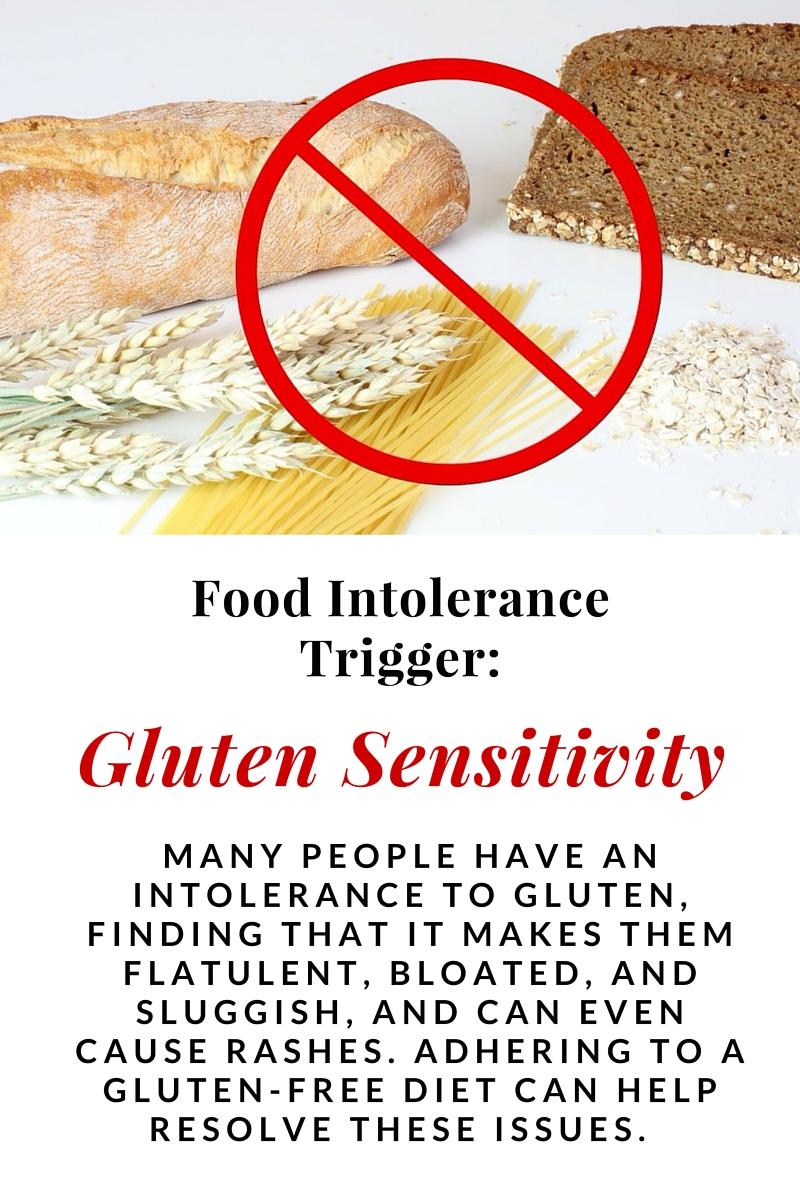 Food intolerance symptoms can be confusing for many people, especially since these symptoms might take up to 72 hours to present.
Food intolerance symptoms can be confusing for many people, especially since these symptoms might take up to 72 hours to present.
If, for example, you get diarrhea three days after eating something, it’s difficult to understand that a food consumed several meals ago is the reason for the diarrhea; most people assume it’s related to something they just recently ate, which is also possible.
Researchers estimate that almost 15 million Americans have food allergies, and the numbers are rising (1). The Centers for Disease Control and Prevention reported in 2013 that food allergies among children increased about 50% between 1997 and 2011.
There are eight foods that are responsible for 90% of all allergic reactions: milk, eggs, peanuts, tree nuts, soy, wheat, fish, and shellfish. Even trace amounts of a food allergen can cause a reaction, and these are the same foods that many people have an intolerance to (2).

How Food Intolerances Differ from Food Allergies
Time is the defining difference between symptoms of food intolerances and symptoms of true food allergies (3). Real food allergies will come on pretty much right away; there will be no delayed reaction. A food allergy can be triggered from the tiniest bit of food, will happen every time you eat that food, and above all, it can kill you if your allergy produces an anaphylactic shock. If you have a severe allergy, you need to carry an EpiPen. It epinephrine (also known as adrenaline) which can stop the allergic reaction in it tracks long enough to get you to a hospital. A food intolerance, on the other hand, requires no such treatment; it only requires knowing which foods make you feel awful and then deciding to limit or eliminate them from your diet. Unlike allergic reactions, food intolerances produce immune (inflammatory) responses that can vary in seriousness. They affect:
-
Digestion:
This mainly causes bouts of diarrhea as the body tries to remove the substance that triggered the immune response.
-
Skin issues:
This typically presents in the form of rashes, and also general itchiness. Rashes may appear anywhere, even around the genitals, so don’t be alarmed.
-
Joints:
Pain is felt as a result of inflammation.
-
Respiratory problems:
Though not severe like true anaphylaxis, food intolerances can make it hard for you to breathe because the lungs and airways become inflamed. Watch this closely and stop eating the trigger food; this is getting close to a real allergy.
-
Energy level:
Food intolerances can promote feelings of sluggishness and fatigue. If your energy level suddenly dips after eating a certain food, note it and see if it happens a few more times after ingesting it. If you feel dips continuously, then you likely have an intolerance to that food.
-
Psychological health:
Food intolerances can cause foggy thinking.
Food Allergy Action Month
May is Food Allergy Action Month—a time for people to be aware about the seriousness of food allergies and a time to educate people about the life-threatening potential of such allergies. Understanding personal food and drink intolerances is important for everyone, especially when some intolerances can become full-blown allergies. Making good choices for your health starts with knowing the right kind of diet for your body. You can start by learning the symptoms of food intolerance and recognizing which foods and food groups are triggers for you.
Signs of Food Intolerance Symptoms in Children and Adults
Physical reactions to certain foods are common, but most are caused by a food intolerance rather than a food allergy. A food intolerance can cause some of the same signs and symptoms as a food allergy, so people often confuse the two. A true food allergy will cause an immune system reaction that can affect many areas of the body: the skin, the cardiovascular system, the gastrointestinal tract, and the respiratory system. There will be a range of symptoms, many of which are shared with food intolerance symptoms. Food intolerance symptoms in adults are less severe and will mostly present as digestive issues, namely diarrhea. Children have the same symptoms, but they might be more pronounced and will have a harder time explaining what they are experiencing. What are the symptoms of food intolerance (4)? The following four symptoms are shared with food allergies and intolerances:
- Nausea
- Vomiting
- Diarrhea
- Stomach pain
The symptoms that are exclusive to food intolerances alone are:
- Heartburn
- Headaches
- Irritability
- Gas
- Cramps
- Bloating

Common Food Intolerance Triggers
1. Enzyme Defect
Enzyme deficiencies cause a lot of food intolerances. We need digestive enzymes to help break down food, and some people lack the proper enzymes for specific foods; lactose intolerance is a good example of this.
2. Gluten Sensitivity
Many people have an intolerance to gluten, finding that it makes them flatulent, bloated, and sluggish, and can even cause rashes. Adhering to a gluten-free diet can help resolve these issues. Alternatively, you could eliminate one gluten product at a time and determine which one causes you the most grief, then keep the ones that are tolerable. People with celiac disease understand what a food allergy feels like because their condition involves the immune system, but it differs from a true food allergy because their symptoms are mostly gastrointestinal and there is no risk of anaphylaxis.
3. Food Additives
If you eat prepared or processed foods, then you know that additives are part of the process, and for many people these chemical additives cause intolerances. A good example is dried apricots. Organic dried apricots appear brown and withered (which is how they should look) as opposed to the bright orange of the conventional variety. This is because sulfites have been added to preserve the apricot’s color. But sulphites have been known to trigger migraines and other symptoms such as diarrhea, and these symptoms occur because of an intolerance. If this happens to you, try eating an organic dried apricot and see if the symptoms still happen. Examples of food additives include:
- Artificial colorings and flavorings;
- Emulsifiers (a binding agent);
- Flavor enhancers (MSG is a big one, but MSG goes by a dozen other names so you need to be a savvy consumer);
- Preservatives;
- Sweeteners;
- Nitrates; and
- Sulfites.
4. Salicylate Intolerance
Salicylate intolerance (5) occurs when the body cannot handle salicylates, which are chemicals found in plants and the primary component in aspirin (salicylic acid). They are also found in many foods. Most people can consume salicylate-containing foods without issue, but some people suffer symptoms after eating large amounts. Salicylates are found in most fruits, vegetables, spices, herbs, and tea, which is unfortunate and makes eating a real chore. Tomato sauce, berries, and citrus fruits have high levels of salicylates, so start by eliminating or cutting back on those foods. Because of the wide range of foods that have salicylates, it’s a good idea to talk to a nutritionist to work out a food plan based on this intolerance.
Food Intolerance Testing

Unfortunately, there are no standardized tests for food intolerances as there are for food allergies (e.g., the skin prick test). Rather, the only way to determine whether or not a food intolerance is present is to pay attention to the food intolerance symptoms and then remove the suspected offending food from the diet. This is called an elimination diet. You can do this on your own or by working with a dietician or a naturopathic doctor. Sometimes, a food intolerance can resolve on its own as a result of giving the body a long break from it. Once a food is eliminated from the diet completely for a period of time (there’s no hard-and-fast rule for this, but try it for a few months at least), the food then is reintroduced into the diet to see what happens. If you’re lucky, maybe that’s all you’ll need to rid yourself of the intolerance!
Read Next:
